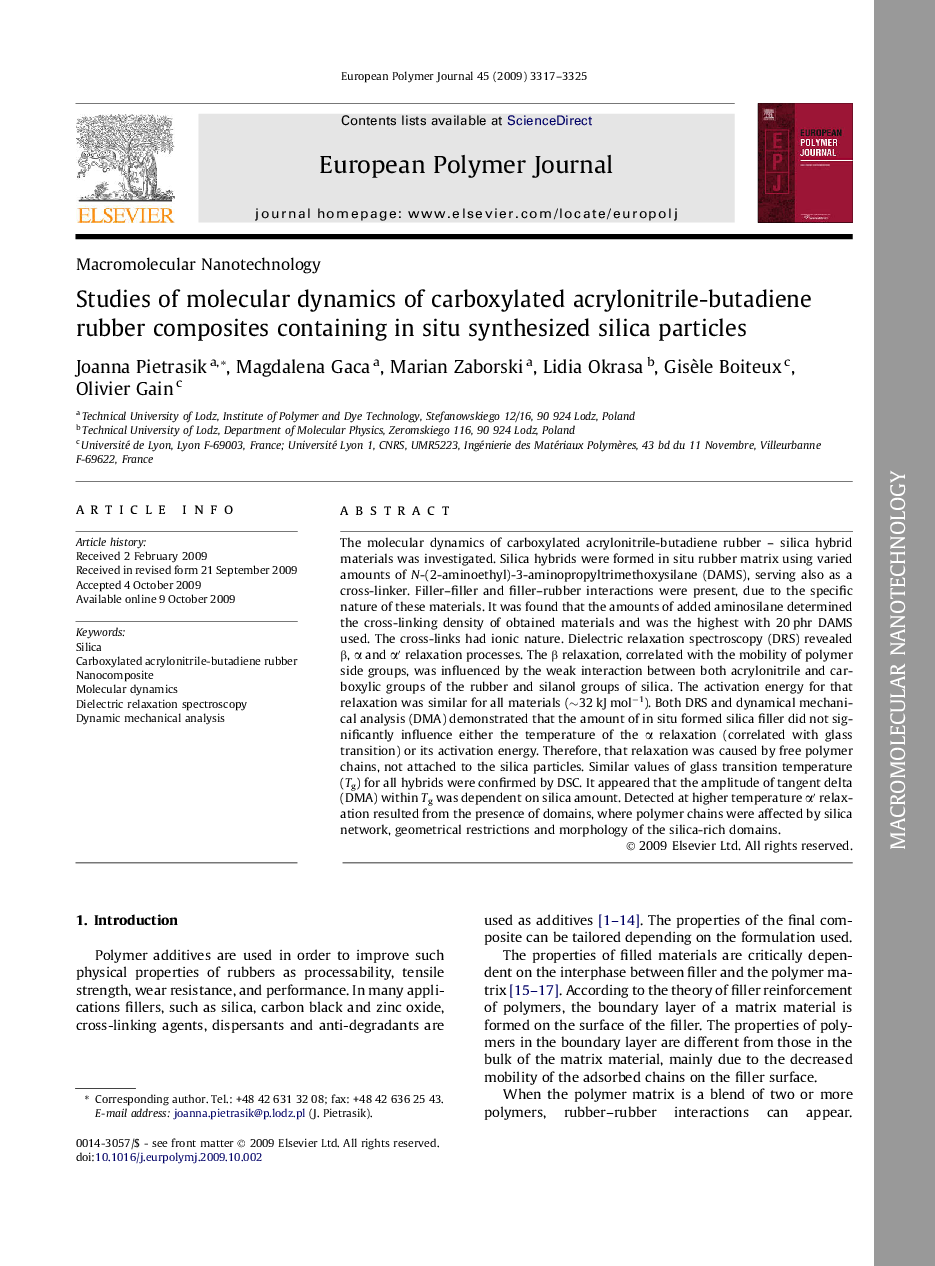| Article ID | Journal | Published Year | Pages | File Type |
|---|---|---|---|---|
| 1396217 | European Polymer Journal | 2009 | 9 Pages |
The molecular dynamics of carboxylated acrylonitrile-butadiene rubber – silica hybrid materials was investigated. Silica hybrids were formed in situ rubber matrix using varied amounts of N-(2-aminoethyl)-3-aminopropyltrimethoxysilane (DAMS), serving also as a cross-linker. Filler–filler and filler–rubber interactions were present, due to the specific nature of these materials. It was found that the amounts of added aminosilane determined the cross-linking density of obtained materials and was the highest with 20 phr DAMS used. The cross-links had ionic nature. Dielectric relaxation spectroscopy (DRS) revealed β, α and α′ relaxation processes. The β relaxation, correlated with the mobility of polymer side groups, was influenced by the weak interaction between both acrylonitrile and carboxylic groups of the rubber and silanol groups of silica. The activation energy for that relaxation was similar for all materials (∼32 kJ mol−1). Both DRS and dynamical mechanical analysis (DMA) demonstrated that the amount of in situ formed silica filler did not significantly influence either the temperature of the α relaxation (correlated with glass transition) or its activation energy. Therefore, that relaxation was caused by free polymer chains, not attached to the silica particles. Similar values of glass transition temperature (Tg) for all hybrids were confirmed by DSC. It appeared that the amplitude of tangent delta (DMA) within Tg was dependent on silica amount. Detected at higher temperature α′ relaxation resulted from the presence of domains, where polymer chains were affected by silica network, geometrical restrictions and morphology of the silica-rich domains.
Graphical abstractFigure optionsDownload full-size imageDownload as PowerPoint slide
